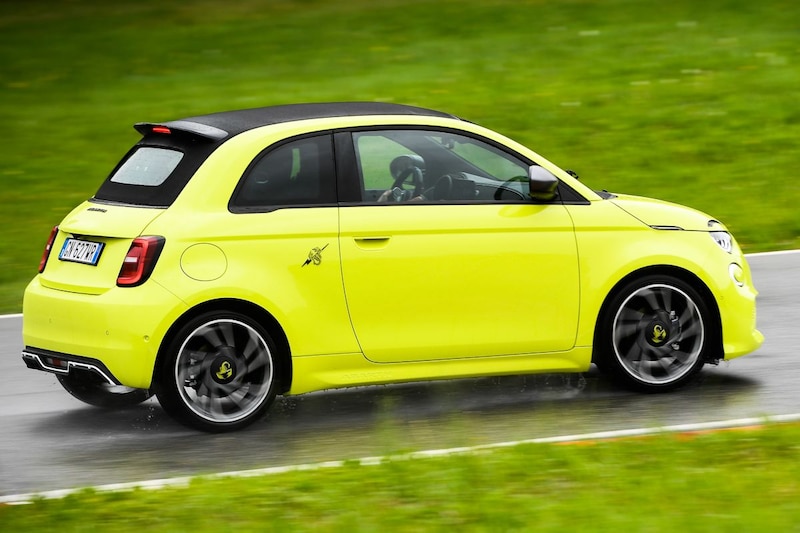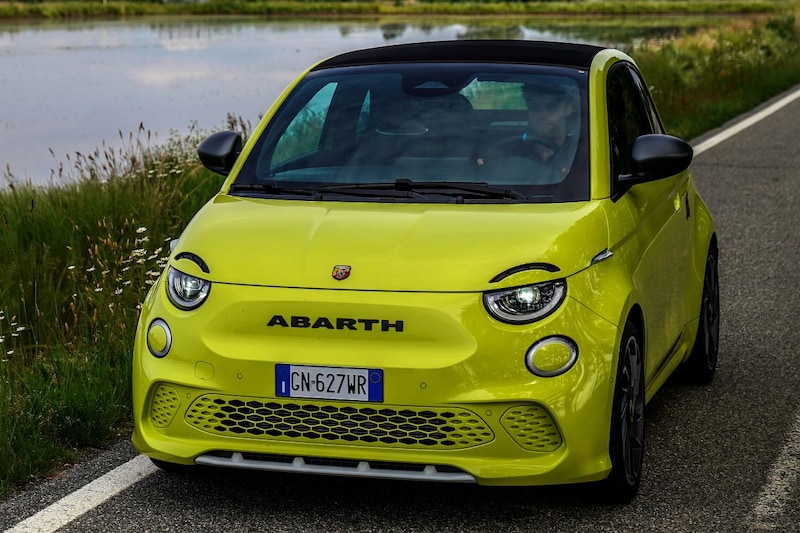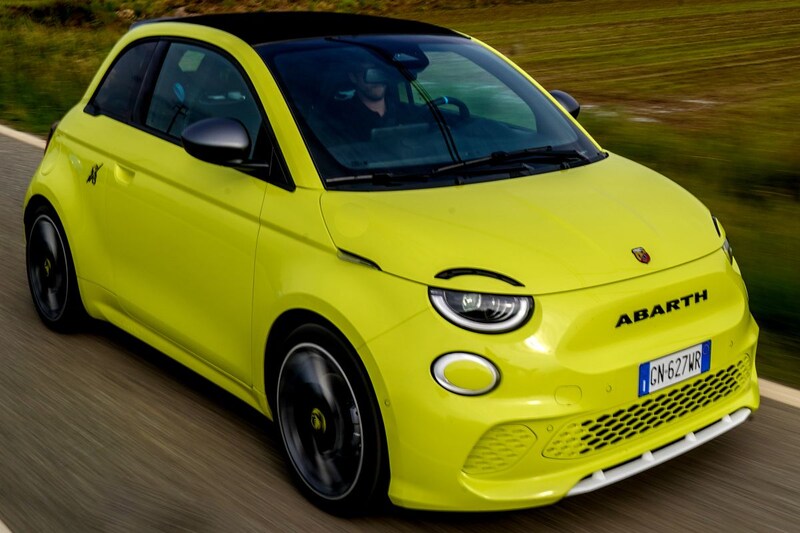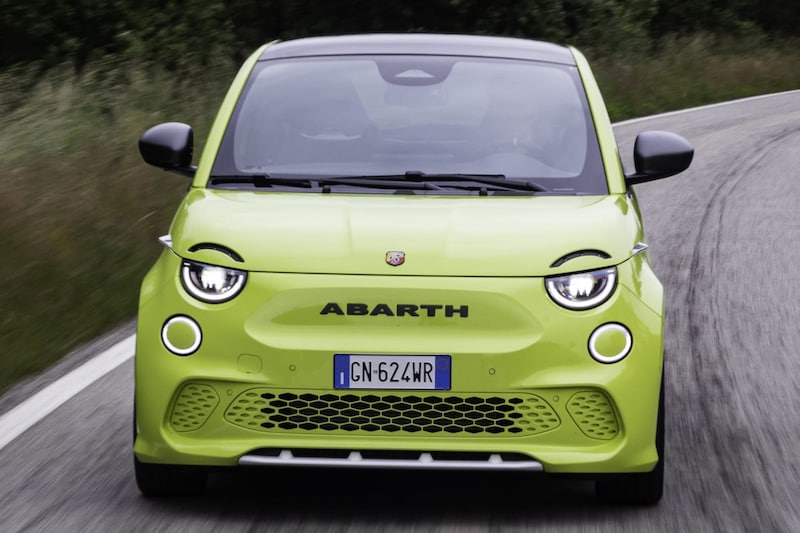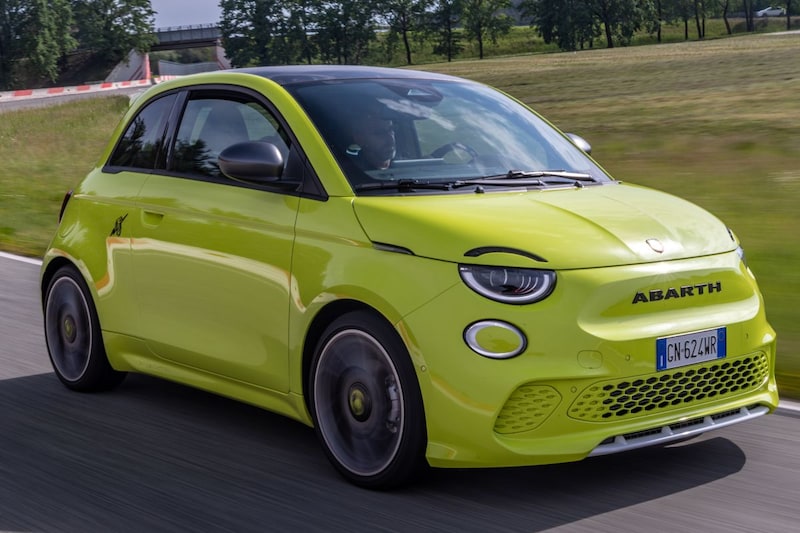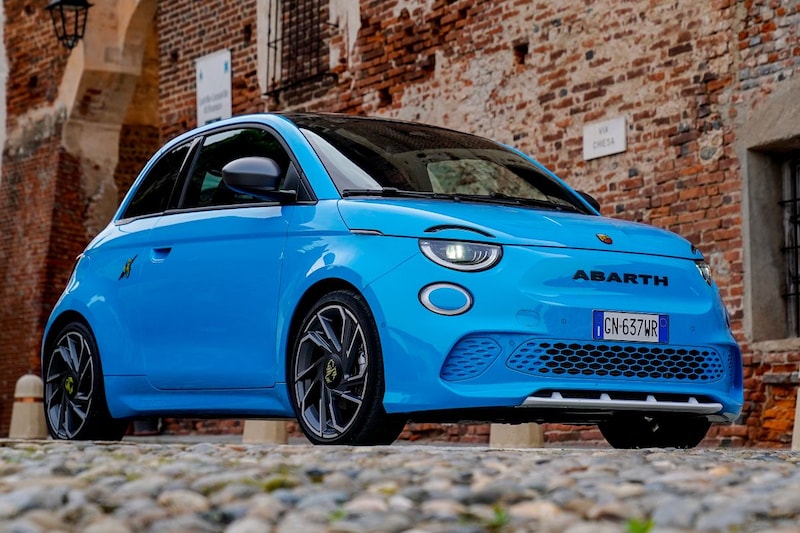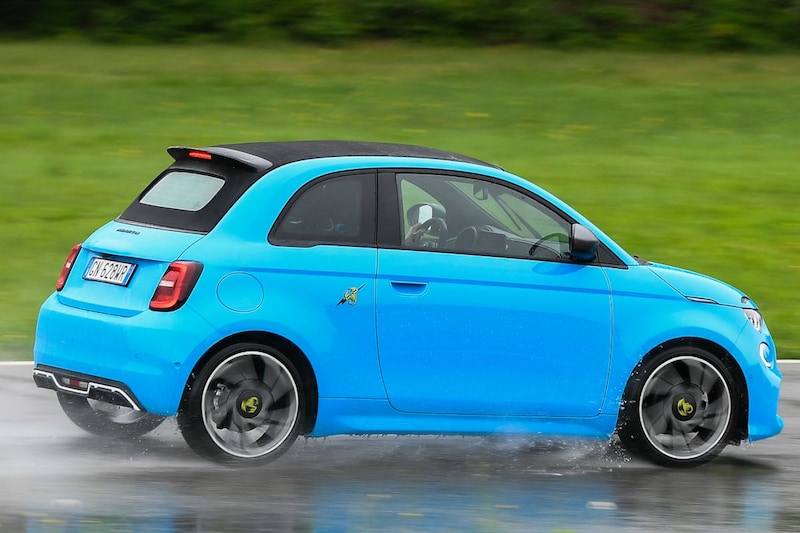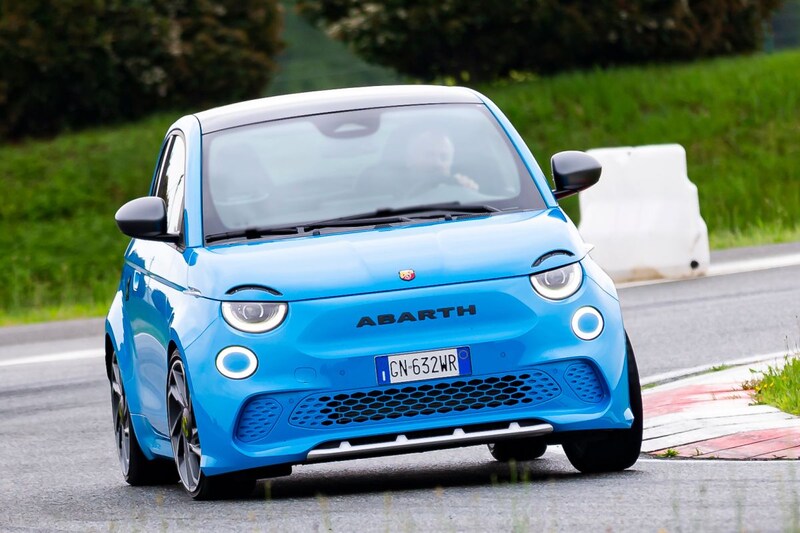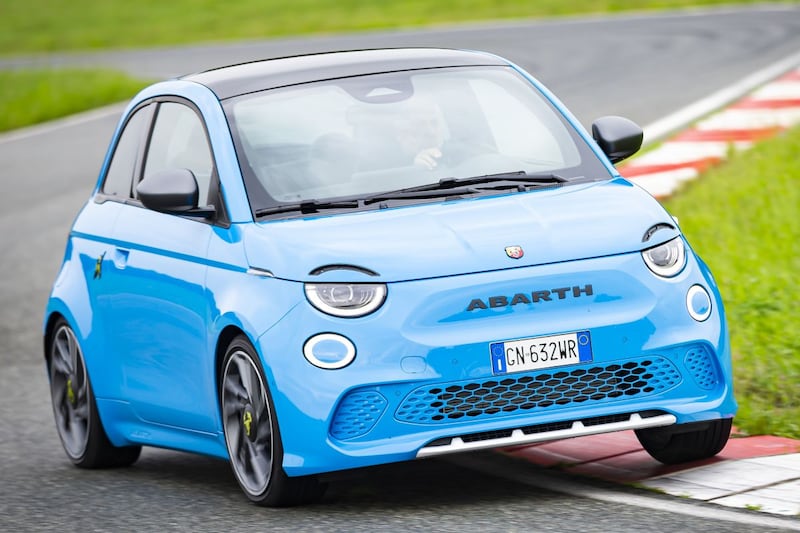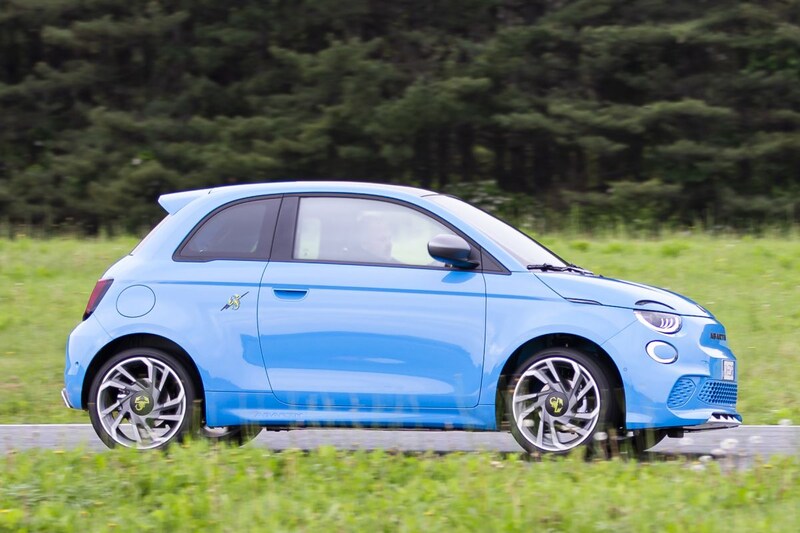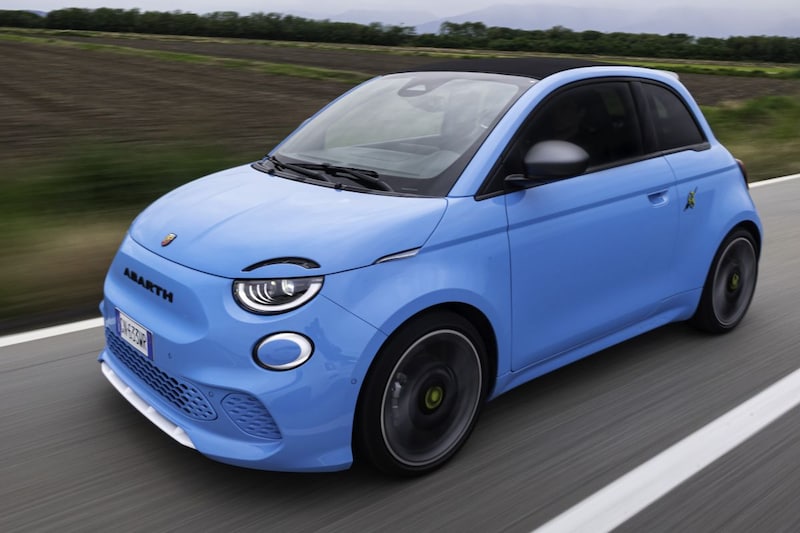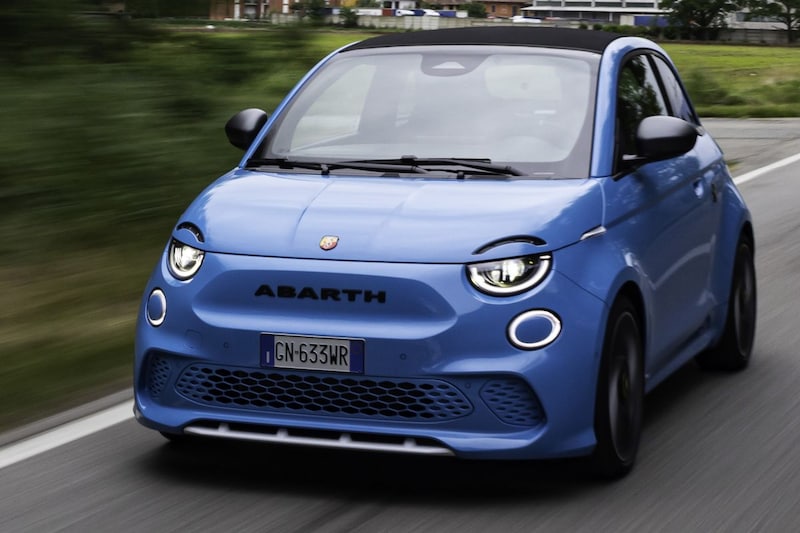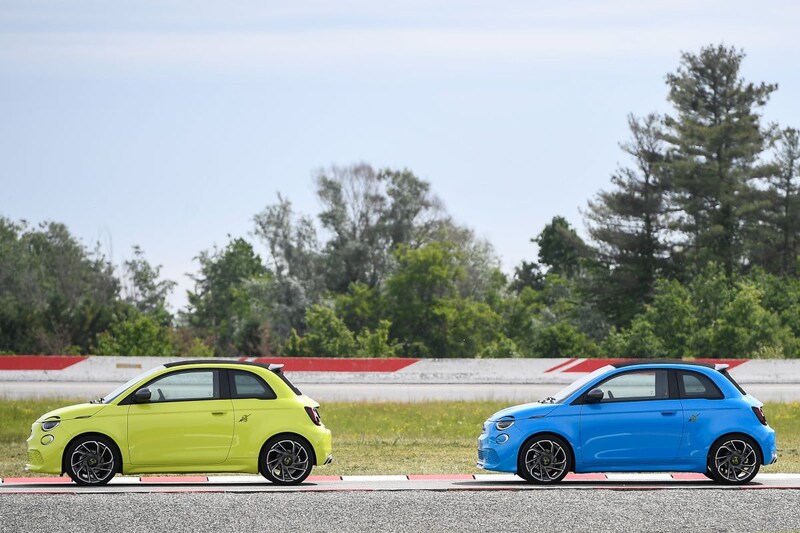Colorful gadget
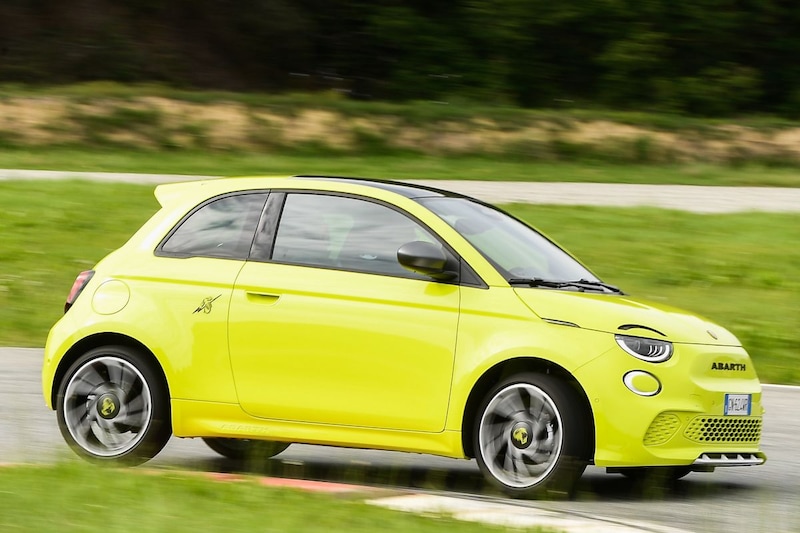

In a first test of the electric Abarth 500e, we see whether the car has enough distinctive character compared to the Fiat 500e, but also whether it is a worthy successor to the ‘old’ Abarths with a petrol engine. At least it sounds like it.
Wait a minute: it sounds like the already known Abarths?
Of course. To our knowledge, Abarth is the first car manufacturer to make an EV sound like a petrol car. Somehow that is of course very strange, because everyone knows that the roar from under the rear bumper is completely artificial. It comes from what Abarth appropriately calls a ‘Sound Generator’ and purposefully sounds like the ‘old’ petrol engined Abarth too. At least, approximately. Those who listen carefully will soon hear that it is fake, although bystanders can simply be put on the wrong track by the roar. Hell, now we secretly like it. The ‘Sound Generator’ also reacts to the gas when stationary, so that you can ‘rev’ just like with a petrol car. What the artificial sound fails to do is attempt to mimic acceleration. So the Abarth pulls to higher speeds with one long, uninterrupted roar. Anyone who is fed up can turn off the system. That goes via a somewhat clumsy route in the digital instruments, but then the Abarth is also completely silent. The basic version does not have it at all, so that saves another dilemma.
And if you turn it off, you don’t stand out?
Anyway. Like the 500-based Abarths we’ve known for so many years, the Abarth 500e is a lot sturdier as standard than the Fiat-branded alternative. The deep front bumper, large wheels and thick side skirts do a lot for the otherwise cute little car. The colors cannot go unnoticed, because ‘Poison Blue’ and ‘Acid Green’ in particular stand out. With the headlights, it is striking that the upper part does not light up here, so that a kind of angry looker effect is created. Little has changed at the back, although the Abarth does have a more striking insert at the bottom of the bumper and the Abarth 500e Cabrio gets a larger roof spoiler.
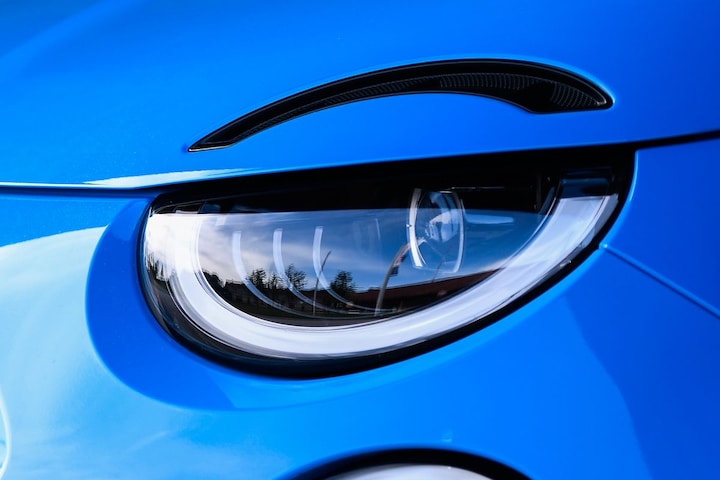
The upper part of the headlight does not burn with the Abarth. So angry lookers!
Does the interior also receive attention?
It is also a sporty party inside, thanks to a three-spoke sports steering wheel and sporty shaped seats. They are different from its predecessor in height adjustable, while you can adjust the steering wheel in multiple directions. The seating position is therefore considerably better than in the 595 and 695, although it is still not great.
Is it still a little fast?
That depends on what you compare it to. All electric Abarths currently have a 155 hp electric motor. That results in a 0-100 time of 7 seconds. For comparison: the Abarth 595 did that in 7.3 seconds at best, the 695 in 6.7. According to Abarth, the profit is mainly in the intermediate sprints. There, the car eats seconds left and right from the time that the Abarths realize on petrol. In practice, this is noticeable. Where the 180 hp 1.4 Turbo of the 695 has to climb out of a deep valley after a short bend to regain strength, the 500e is immediately ready.
Perhaps even more important with such a small bomb: is it fun?
The fact that the Abarth 500e is a lot heavier than the 695 at 1,300 kg can be noticed on the Balocco test circuit. It simply feels a bit bulky and bigger, but is also playful and very capable. A better distribution of the weight, in height but also over the front and rear axle, undoubtedly plays a major role in this. There are three driving modes: ‘Turismo’, ‘Scorpion Street’ and ‘Scorpion Track’. Turismo is the comfortable and somewhat less smooth option, the difference between the two Scorpion modes is mainly that the car regenerates much faster in ‘Street’ and really comes to a complete stop without braking. Compared to the Fiat 500e, the chassis has of course been addressed. Different springs and dampers and disc instead of drum brakes on the rear axle, together with the 18-inch wheels and wide tires – 17 is standard – bring more grip, more feeling and more fun. The steering is nice and direct, although a little more feeling and counter pressure would be welcome when things go really fast. The power seems well chosen. For an EV, the Abarth is not super fast, but with even more electric power on the front wheels, the disadvantages – loss of grip, tangible drive forces – might outweigh the advantages. The electric Abarth actually shines mainly off the track, on the winding roads along the northern Italian rice fields. The chassis eliminates the many irregularities there with remarkable ease, while at the same time we have a lot of fun in this direct, fierce biter. A nice compromise, therefore, extremely suitable for the style-conscious city dweller for whom it is intended.
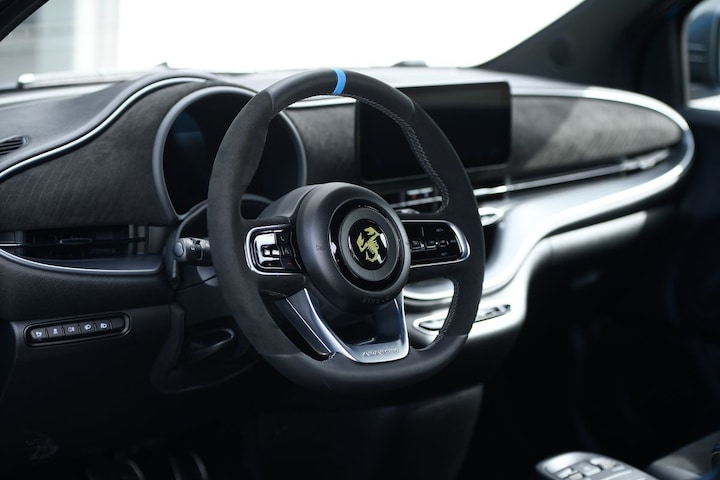
City dweller… so it won’t get you very far?
With 265 kilometers, the promised range is remarkably much tighter than the 321 kilometers that the Fiat 500e achieves with the same battery pack. That battery – 42 kWh gross, 37.8 net – can be pumped up again on the fast charger with a maximum of 85 kW, neat for this segment.
In which versions is the Abarth 500e available?
The delivery range of the Abarth 500e is nice and clear. It is available as a three-door and as a convertible, but not as a 3 + 1 with the extra door on the right. Both body styles are then available in two versions, the nameless basic version and the more luxurious Turismo. There are hardly any separate options and the standard equipment is very decent. That is also allowed, because the hip little one costs at least 38.5 mille. Hard to defend rationally, but that was never the idea with this little charmer. Opting for a petrol Abarth is no longer an option in the Netherlands: here Abarth only supplies the electric 500e.
.
– Thanks for information from Autoweek.nl
